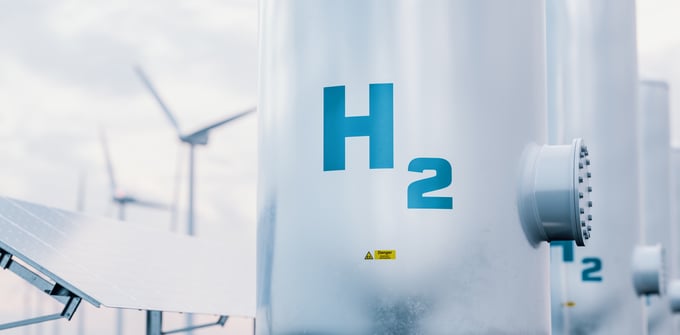After over a year of wrangling, the European Union has finally come to a decision about what makes hydrogen truly green. Electrolysis, using an electric current to split water into its component parts of hydrogen and oxygen, is potentially much greener than using methane as a feedstock. But the emissions intensity of the process depends on where the electricity comes from. And this has been the sticking point for EU negotiations - until now.
The European Commission has adopted two Delegated Acts required under the Renewable Energy Directive. It is now clear that hydrogen, or any other fuel, cannot be classed as a renewable fuel of non-biological origin (RFNBO) unless the electricity used to produce it is renewable.
A clear signal to clean up
Readers of the ENTRNCE blog will be familiar with a point we make regularly: just because an electricity tariff is marketed as “100% green” doesn’t mean it’s all from renewable sources. Grid energy has been described as “the energy smoothie” because energy from multiple sources are all supplied together and you can’t isolate renewables from the mix. But you can use granular data on that grid mix to maximise the proportion of renewables in the energy you use. And you can use data to make better decisions on the type of sourcing you invest in, whether that’s on-site renewables or a corporate power purchase agreement.
This is precisely why ENTRNCE built the Matcher: because although 24/7 clean energy isn’t possible yet, we need to be taking the first steps towards it. And it seems that the EU understands this. A press release from the European Commission explains: “[The Delegated Act] introduces criteria aimed to ensure that renewable hydrogen is only produced when and where sufficient renewable energy is available (known as temporal and geographic correlation).”
An end to GOs and REGOs
At the moment, the most common system for classifying energy as renewable, whether you’re a supplier or a producer of “green” fuels, involves buying certificates. These are known as Guarantees of Origin (GOs) or Renewable Energy Guarantees of Origin (REGOs). Then you reconcile your consumption with your purchase of these certificates at the end of the year. We have written extensively about how these certificates are divorced from the actual energy produced and how annual reconciliation is no longer fit for purpose.
It will take time for hydrogen producers to move to the much more effective system of real-time energy tracking. So the EU is offering a grace period, allowing them to continue with the system of reconciling certificates until the start of 2030. However, member states have the option of introducing their own, stricter standards from 1 July 2027.
True additionality
One of the original concerns about green hydrogen was the possibility that producers would use existing renewable capacity in order to legally label their product as “green”, resulting in a reduction in availability of renewable energy for other users. This would have the overall effect of undermining the EU’s decarbonisation efforts.
The European Commission have now solved this problem: “Electrolysers to produce hydrogen will have to be connected to new renewable electricity production.” This means that it will possess the crucial quality of additionality: resulting in the creation of additional capacity rather than simply utilising existing capacity. Verifying additionality also requires a robust data-driven approach – precisely what ENTRNCE have been advocating for years.
Transparency will be key
Meanwhile, the UK has just launched a consultation into how its own low carbon hydrogen certification scheme could work. The consultation also recognises that the electricity inputs for a hydrogen production facility can vary greatly in terms of upstream greenhouse gas emissions, and asks how to best approach this. The focus is on creating a standard that is both “trusted” and “transparent”.
The direction of travel is clear: the EU and national governments are beginning to recognise the need for transparency on the nature of electricity supply. This means data that is granular at the half-hourly level, not certificates to be reconciled once a year. Regulatory bodies are recognising a future where platforms like the ENTRNCE solution are essential for determining standards and delivering change.
If your business is involved in hydrogen production or supply, we can help you understand what the new regulations mean for you, and how to comply. Get in touch for advice.



